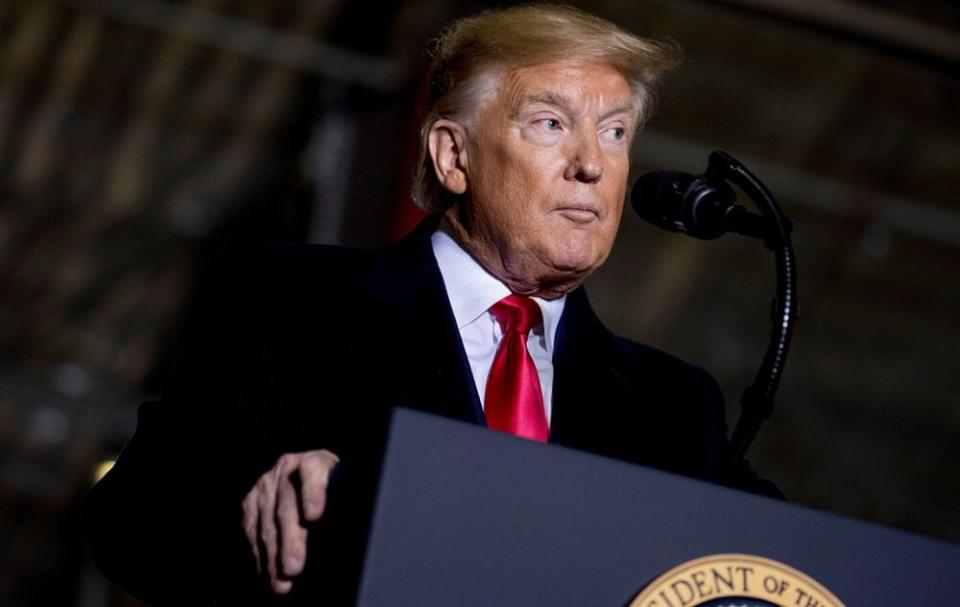Court Gives Trump the Okay to Spend $3.6 Billion in Military Funds on His Mexico Border Wall

A federal appeals court agreed this week, by a two-to-one majority, to allow President Donald Trump to use $3.6 billion in federal military money on the construction of his proposed border wall with Mexico.
Trump’s plan has been one of the most divisive issues of his presidency, stretching back to racist comments he made during his 2016 campaign labeling some Mexican immigrants as criminals and “rapists.”
Politico reports that the 5th U.S. Circuit Court of Appeals in New Orleans made their decision along party lines, with two Republican-appointed judges ruling to approve the move.
The appellate court pointed to a similar decision made by the Supreme Court last year, siding with Trump against another injunction on his plan to fund wall construction with military money.
“Given that building ‘the wall’ was Trump’s No. 1 campaign pledge, it is no surprise that he has been so obsessed with building it,” Peter Andreas, a border wall historian at Brown University, tells PEOPLE. “It is still a long way off, so much so that ‘finish the wall’ will undoubtedly be a lead campaign pledge in the next election.”
In a statement on Thursday, the White House lauded the court’s decision and insisted “we will finish the wall.”
“The United States Court of Appeals for the Fifth Circuit has lifted an illegitimate nationwide injunction entered by a lower court, and in doing so has allowed vital border wall construction to move forward using military construction funds,” Press Secretary Stephanie Grisham said. This is a victory for the rule of law.”
RELATED: Trump Declares a Sweeping ‘National Emergency’ at the Border to Build His Wall. Now What?

Last year, President Trump declared a national emergency in an effort to secure funding for the border wall after Congress only agreed to pay $1.375 billion toward the project instead of the $6 billion he’d requested.
“People that should have stepped up did not step up,” he said during his emergency declaration, according to Politico. “They didn’t step up and they should have. We are stepping up now.”
A number of entities filed lawsuits against the president, including 20 states and the House of Representatives, according to Politico.
The wall plan has faced intense criticism at every phase, including from Democratic lawmakers who say it would be ineffective border control to those who say his bid to use military money is an illegal end-run around Congress.
Trump has often described problems at the southern border in broad, hyperbolic terms.
“It’s very simple: We want to stop drugs from going into our country, we want to stop criminals and gangs from going into our country,” he said last year, though those claims are unsupported by much data.
“They say walls don’t work,” Trump continued. “Walls work 100 percent.”
But many border wall historians disagree.
“If you look at more recent walls, actually, none of them have worked in the way that they were meant to, mainly if we speak about ‘anti’ — anti-immigration, anti-smuggling, anti-terrorism walls,” Elisabeth Vallet told Rolling Stone last year. “People go around or under, or [the wall] will be overwhelmed in one way or another, like the Maginot Line.”
RELATED: President Trump Wants Billions for a Border Wall — Here’s What He’d Cut to Pay For It
Another federal judge in Washington, D.C., previously denied the House’s efforts to block Trump from getting the $6 billion in funding for his border wall, Politico reported in June, and the judge directed lawmakers to find other means to fight Trump’s border wall funding outside of the courts.
“Congress has several political arrows in its quiver to counter perceived threats to its sphere of power,” judge Trevor McFadden wrote. “These tools show that this lawsuit is not a last resort for the House.”
Trump’s border wall plan has raised debates around the country over immigration reform and the language politicians use when discussing immigration issues.
“Calling it a ‘wall’ — rather than a barrier or a fence — has had enormous symbolic importance, so much so that it is fair to say that the very idea of the wall itself has divided the country more than divided the U.S. and Mexico,” says Andreas, the historian at Brown. “Trump has essentially walled himself off from much of the country, while at the same time gambling that walling himself in with his base can get him re-elected.”

